Ancient Byblos: Powerful Phoenician City With Own Kings
A. Sutherland - AncientPages.com - According to the Amarna Letters and the annals of Thutmose III, Byblos ('Papyrus' in Greek) was dependent and subservient to Egypt for hundreds of years.
Carved limestone sarcophagus of Ahiram, a king of Byblos, bearing a Phoenician inscription, 10th century BC; Credits: National Museum of Lebanon, Beirut via Britannica
However, these ancient texts do not indicate that this Phoenician city remained wealthy during this period.
Most of the ancient Phoenician cities were located along the coastline of today's modern countries of Israel and Lebanon.
The primary Phoenician cities were Byblos, located the farthest to the north along this coastline, Tyre at the south end, and Sidon between the two.
Early in Phoenician history, Byblos was the most important of the three cities. The oldest known historical mention of the town is on the ancient Egyptian "Palermo Stone," dated to the reign of the Fourth Dynasty Egyptian king Snefru.
 St. John-Mark Church, Byblos. source
St. John-Mark Church, Byblos. source
Founded as Gebal by the Phoenicians, Byblos is believed to have been continuously occupied between 8800 and 7000 BC. It's among the oldest cities in the world, located about 35 kilometers (23 miles) north of the capital Beirut in modern-day Lebanon.
The modern port city of Byblos is built upon multiple layers of ancient ruins.
It was given its name by the Greeks, who imported papyrus from the city, which has a history of diverse cultures closely related to the Mediterranean for millennia.
It began as a small fishing village called Gubal (or Gebal), while the coastal region of the land, which the Greeks named Phoenicia, was known to the inhabitants as Canaan.
By 3000 BC, Byblos became a prosperous city through trade and the most crucial timber shipping port to Egypt and elsewhere.
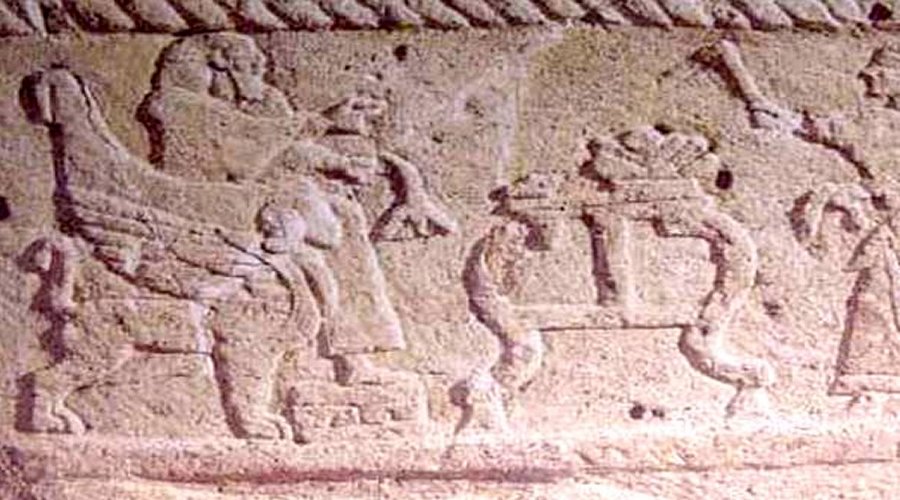 Bas relief is from his sarcophagus. The Cherubim have been identified as Winged Sphinxes (p. 127. Sabatino Moscati. The Phoenicians. Gruppo Editoriale Fabbri Bompiani, Sonzono, Etas S.p.A. Milan. March 1988
Bas relief is from his sarcophagus. The Cherubim have been identified as Winged Sphinxes (p. 127. Sabatino Moscati. The Phoenicians. Gruppo Editoriale Fabbri Bompiani, Sonzono, Etas S.p.A. Milan. March 1988
Byblos was also the first city to perfect shipbuilding, and it is primarily due to the craftsmanship of the shipwrights of the town that Phoenicians acquired their fame as sailors and "princes of the sea" (as they are referred to in the biblical book of Ezekiel).
It was also when the most significant powers of the ancient New East, such as the Hittites, Babylon, and Egypt, dominated the region. They divided smaller kingdoms amongst themselves. Byblos and most of Phoenicia fell under Egyptian control.
Archaeological evidence shows that ancient Byblos was a walled city with both a land and a sea gateway during Egyptian domination. Byblos' planning was relatively advanced for the time.
Byblos streets were built concentrically to the town center, and canals carried rain and drainage water away. Many funerary offerings indicate that the inhabitants of Byblos prospered financially and materially despite their subordination to Egypt.
Historians believe that it was possible mainly due to trade with the Egyptians. Egypt delivered gold, papyrus, alabaster, and linen to Phoenicia. The Phoenicians had cedar and other wood for shipbuilding, tomb construction, and funerary ritual, which the Old Kingdom's pharaohs needed.
 The Obelisk temple is named after the nearly 30 obelisks discovered standing in the temple’s courtyard.
The Obelisk temple is named after the nearly 30 obelisks discovered standing in the temple’s courtyard.
The Phoenicians then developed their alphabet of 22 characters, which replaced cuneiform in written communication. Through trade routes, the Phoenician alphabet traveled first to Greece around 800 BC and then spread to other countries through Greek merchants.
Between 1100 and 725 BC, Byblos declined in importance, but later it began to prosper again.
This city has a turbulent history of at least 6,000 years, full of interactions with various cultures, which left the Bronze Age's monumental temples, the Persian fortifications, the Roman road, Byzantine churches, the Crusade citadel, and the Medieval and Ottoman town.
Under Arab rule beginning in 637 AD, Byblos started to decline in wealth and importance. The great port was virtually ignored for centuries; thus, the city became an easy target for invading Crusaders in 1098 AD. Once the Crusaders left, the Muslim rulers neglected the town until it was utterly forgotten for centuries.
In 1860 AD, thanks to the French historian Ernest Renan, the ancient site was rediscovered, and continuous excavations took place between 1925 and 1975.
This city has a turbulent history of at least 6,000 years, full of interactions with various cultures, which left the Bronze Age's monumental temples, the Persian fortifications, the Roman road, Byzantine churches, the Crusade citadel, and the Medieval and Ottoman town.
Under Arab rule beginning in 637 AD, Byblos started to decline in wealth and importance. The great port was virtually ignored for centuries; thus, the city became an easy target for invading Crusaders in 1098 AD. Once the Crusaders were driven out, the Muslim rulers neglected the town until it was forgotten for centuries.
In 1860 AD, thanks to the French historian Ernest Renan, the ancient site was rediscovered, and continuous excavations were organized from 1925 to 1975.
Written by – A. Sutherland AncientPages.com Staff Writer
Updated on December 30, 2023
Copyright © AncientPages.com All rights reserved. This material may not be published, broadcast, rewritten or redistributed in whole or part without the express written permission of AncientPages.com
Expand for referencesReferences:
M. De Lafayette, Phoenicia, Ur, and Carthage: Artifacts, Inscriptions, Slabs, Sites
Bob E.J.H. Becking, L. Grabbe, Between Evidence and Ideology
More From Ancient Pages
-
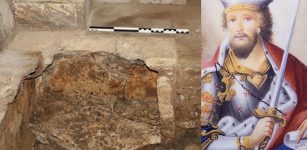 Location Of Burial Place Belonging To Alexander Nevsky’s Son And Grandson – Found
Archaeology | May 3, 2021
Location Of Burial Place Belonging To Alexander Nevsky’s Son And Grandson – Found
Archaeology | May 3, 2021 -
 Remarkable And Unexplained Historical Sighting Reported By Multiple Witnesses In Wyoming
Featured Stories | Sep 26, 2024
Remarkable And Unexplained Historical Sighting Reported By Multiple Witnesses In Wyoming
Featured Stories | Sep 26, 2024 -
 Is There An Ancient Anomaly In Our DNA? It Is Possible, Scientists Say
Featured Stories | Mar 6, 2025
Is There An Ancient Anomaly In Our DNA? It Is Possible, Scientists Say
Featured Stories | Mar 6, 2025 -
 Ancient Cotton Fibers Dating Back 7,000 Years Discovered In NE Israel
Archaeology | Dec 19, 2022
Ancient Cotton Fibers Dating Back 7,000 Years Discovered In NE Israel
Archaeology | Dec 19, 2022 -
 Pharaoh Hor Aha – 1st Dynasty Ruler Of Ancient Egypt Who Founded The City Of Memphis And May Have Been The Legendary Menes
Featured Stories | Jun 23, 2018
Pharaoh Hor Aha – 1st Dynasty Ruler Of Ancient Egypt Who Founded The City Of Memphis And May Have Been The Legendary Menes
Featured Stories | Jun 23, 2018 -
 Advanced Ancient Technology – Talos A Greek Robot Created By The God Of The Forge
Featured Stories | Jun 28, 2014
Advanced Ancient Technology – Talos A Greek Robot Created By The God Of The Forge
Featured Stories | Jun 28, 2014 -
 1,300-Year-Old Art Mystery Solved By Scientist
Archaeology | Sep 7, 2022
1,300-Year-Old Art Mystery Solved By Scientist
Archaeology | Sep 7, 2022 -
 Lavish Home And Exotic Garden Of Emperor Caligula Discovered In Rome
Archaeology | Nov 19, 2020
Lavish Home And Exotic Garden Of Emperor Caligula Discovered In Rome
Archaeology | Nov 19, 2020 -
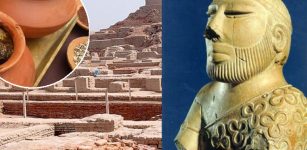 Cooking In Indus Valley – Leftovers In Prehistoric Kitchen’s Vessels Analyzed
Archaeology | Mar 24, 2022
Cooking In Indus Valley – Leftovers In Prehistoric Kitchen’s Vessels Analyzed
Archaeology | Mar 24, 2022 -
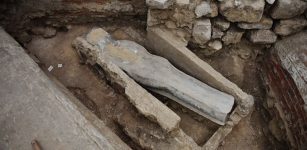 Mysterious Leaden Sarcophagus Found Under Notre Dame Will Be Opened
Archaeology | Apr 17, 2022
Mysterious Leaden Sarcophagus Found Under Notre Dame Will Be Opened
Archaeology | Apr 17, 2022 -
 Rakshasas: Night Wandering Race Of Demons And Warriors Fuelled By Kundalini In Hindu Beliefs
Featured Stories | Oct 8, 2019
Rakshasas: Night Wandering Race Of Demons And Warriors Fuelled By Kundalini In Hindu Beliefs
Featured Stories | Oct 8, 2019 -
 Surprising Discovery Of Almost Intact Roman Sanctuary With Temples In The Netherlands
Archaeology | Dec 23, 2022
Surprising Discovery Of Almost Intact Roman Sanctuary With Temples In The Netherlands
Archaeology | Dec 23, 2022 -
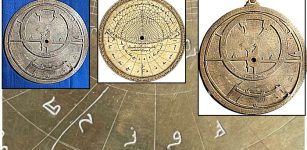 Rare Eleventh-Century Astrolabe Unearthed Recently Sheds Light On Islamic-Jewish Scientific Exchange
Scripts, Paintings & Inscriptions | Mar 4, 2024
Rare Eleventh-Century Astrolabe Unearthed Recently Sheds Light On Islamic-Jewish Scientific Exchange
Scripts, Paintings & Inscriptions | Mar 4, 2024 -
 Remarkable Giant Minoan Structure Found On Top Of Papoura Hill, Crete
Archaeology | Jun 11, 2024
Remarkable Giant Minoan Structure Found On Top Of Papoura Hill, Crete
Archaeology | Jun 11, 2024 -
 Underwater Ancient Cypress Forest Offers Clues To The Past
Archaeology | Jun 29, 2021
Underwater Ancient Cypress Forest Offers Clues To The Past
Archaeology | Jun 29, 2021 -
 Kukulkan (Quetzalcoatl): Feathered Serpent And Mighty Snake God
Featured Stories | Feb 7, 2017
Kukulkan (Quetzalcoatl): Feathered Serpent And Mighty Snake God
Featured Stories | Feb 7, 2017 -
 Evidence Of Hallucinogenic Drug Use During Bronze Age Ceremonies Found
Archaeology | Apr 6, 2023
Evidence Of Hallucinogenic Drug Use During Bronze Age Ceremonies Found
Archaeology | Apr 6, 2023 -
 DNA Reveals Stone Age People Avoided Inbreeding
DNA | Mar 9, 2024
DNA Reveals Stone Age People Avoided Inbreeding
DNA | Mar 9, 2024 -
 Quest For Atlantis Of The Sands – Iram Of The Pillars – A Legendary Lost City
Featured Stories | Aug 7, 2018
Quest For Atlantis Of The Sands – Iram Of The Pillars – A Legendary Lost City
Featured Stories | Aug 7, 2018 -
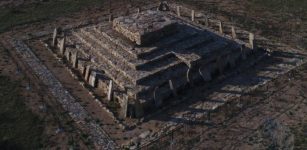 Intriguing 3,400-Year-Old Multipurpose Pyramid Found In Kazakhstan
Archaeology | Nov 2, 2023
Intriguing 3,400-Year-Old Multipurpose Pyramid Found In Kazakhstan
Archaeology | Nov 2, 2023

